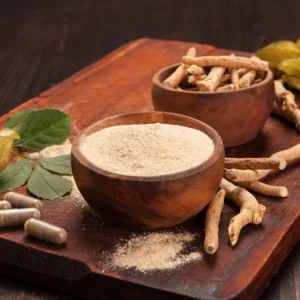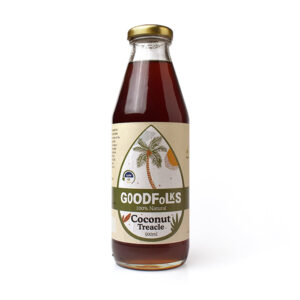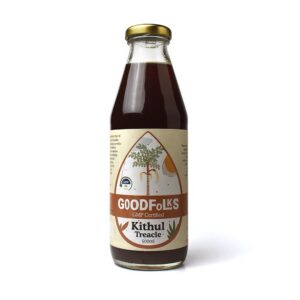Description
In the diverse world of alternative flours, Kithul flour emerges as a hidden gem, offering a unique taste and a range of health benefits. Derived from the sap of the Kithul tree (Caryota urens), native to Sri Lanka and parts of India, this flour has been a staple in traditional, mostly rural Sri Lankan cuisine. With its distinctive flavor and impressive nutritional profile, Kithul flour is gaining popularity in culinary circles around the world. Particularly as one that helps a overheated body, cool things down.
A Journey into Kithul Flour’s Origins
The Kithul tree, often referred to as the “kitul palm” or “wine palm,” is a palm-like tree native to the Indian subcontinent. It is particularly abundant in Sri Lanka, where it has played a significant role in local culture and economy for generations.
The Process
Kithul flour is made from the pith (the inner core) of the Kithul tree. The pith is the soft, spongy tissue found at the centre of the tree trunk. The harvested pith is then cleaned to remove any impurities or foreign matter. It is typically soaked in water and cleaned thoroughly to ensure it is free from debris. After cleaning, the pith is spread out to dry (drying is a crucial step as it reduces the moisture content in the pith and prepares it for grinding). The dried pith is then ground to a fine powder. How fine the flour is depends on the intended use. However Goodfolks Kithul Flour is extremely fine as it is the format that lends itself best to a variety of preparations.
Food preparation with Kithul Flour
Kithul Pancakes: Kithul flour can be used to make delicious and nutritious pancakes. It adds a unique flavor and a slightly sweet taste to the pancakes. These can be served with fruits, nuts, or a drizzle of Kithul treacle.
Kithul Bread: Kithul flour is a wonderful alternative to traditional wheat flour in bread-making. It provides a distinct flavor and a natural sweetness to the bread. Kithul bread can be enjoyed as toast, sandwiches, or with various spreads.
Kithul Pudding: Kithul flour can be used to make a creamy and satisfying pudding. It’s typically combined with coconut milk and Kithul treacle to create a rich and flavorful dessert.
Kithul Fritters: Kithul flour can be used as a base for making fritters. Vegetables, such as onions, carrots, and spinach, can be mixed with the flour, along with spices, to create a flavorful batter. The mixture is then deep-fried to make crispy fritters.
Kithul Cake: Kithul flour is a popular choice for making cakes, especially in Sri Lankan cuisine. It imparts a distinctive taste and a pleasant sweetness to the cake. Kithul cake is often enjoyed on special occasions.
The Cooling Effects of Kithul Flour
They say that “Kithul flour helps cool down the body”. This statement is based on traditional beliefs in systems like Ayurvedic medicine. In (Sri Lankan) Ayurveda, foods are classified as either heating or cooling based on their perceived effects on the body. Kithul flour is considered a cooling food, which means it is believed to have a soothing effect and may be recommended for conditions associated with excessive heat or inflammation.
Kithul Flour is naturally Gluten Free.
















